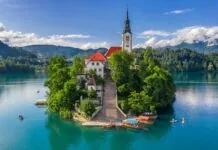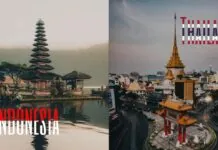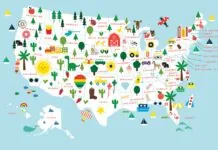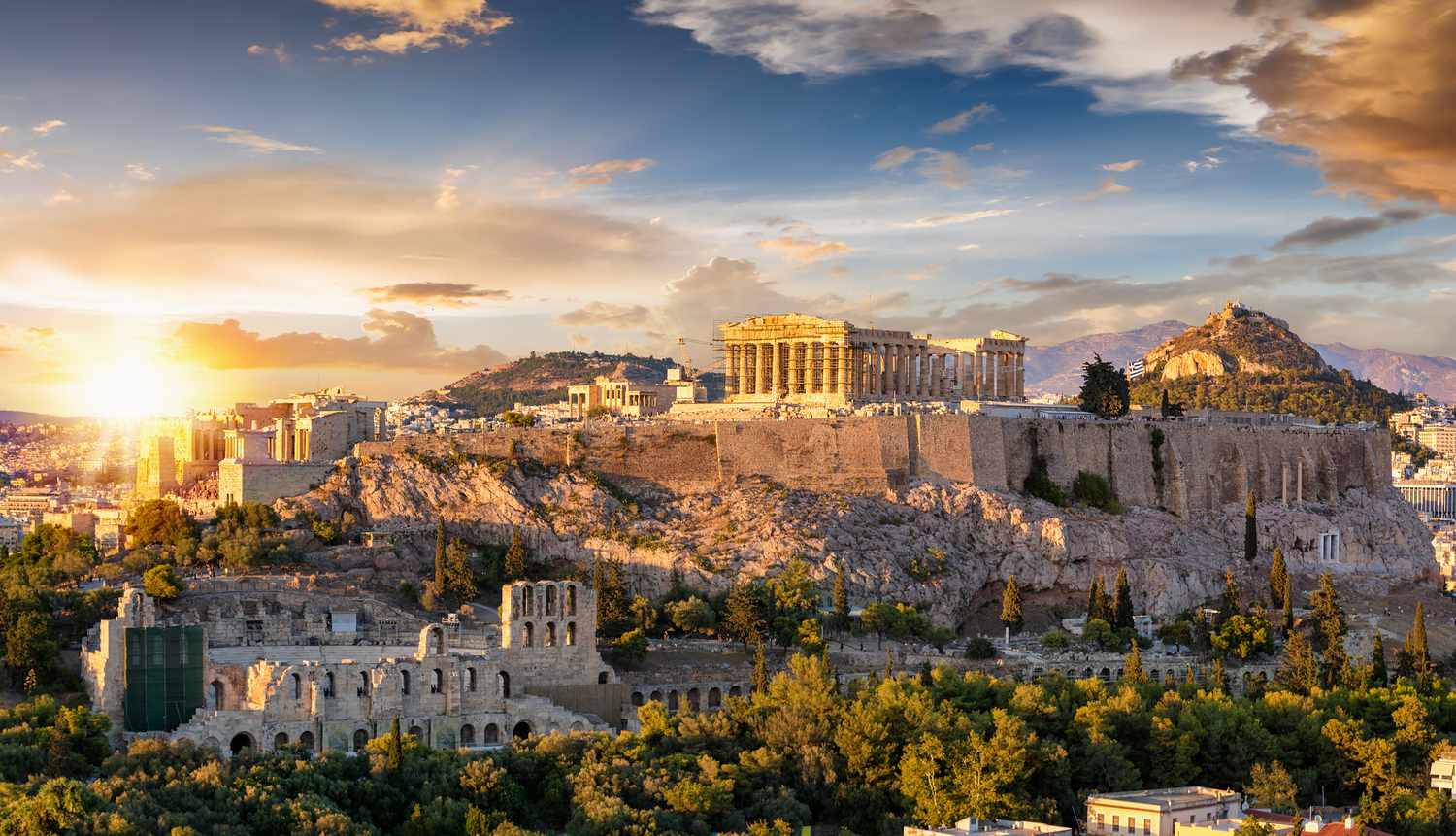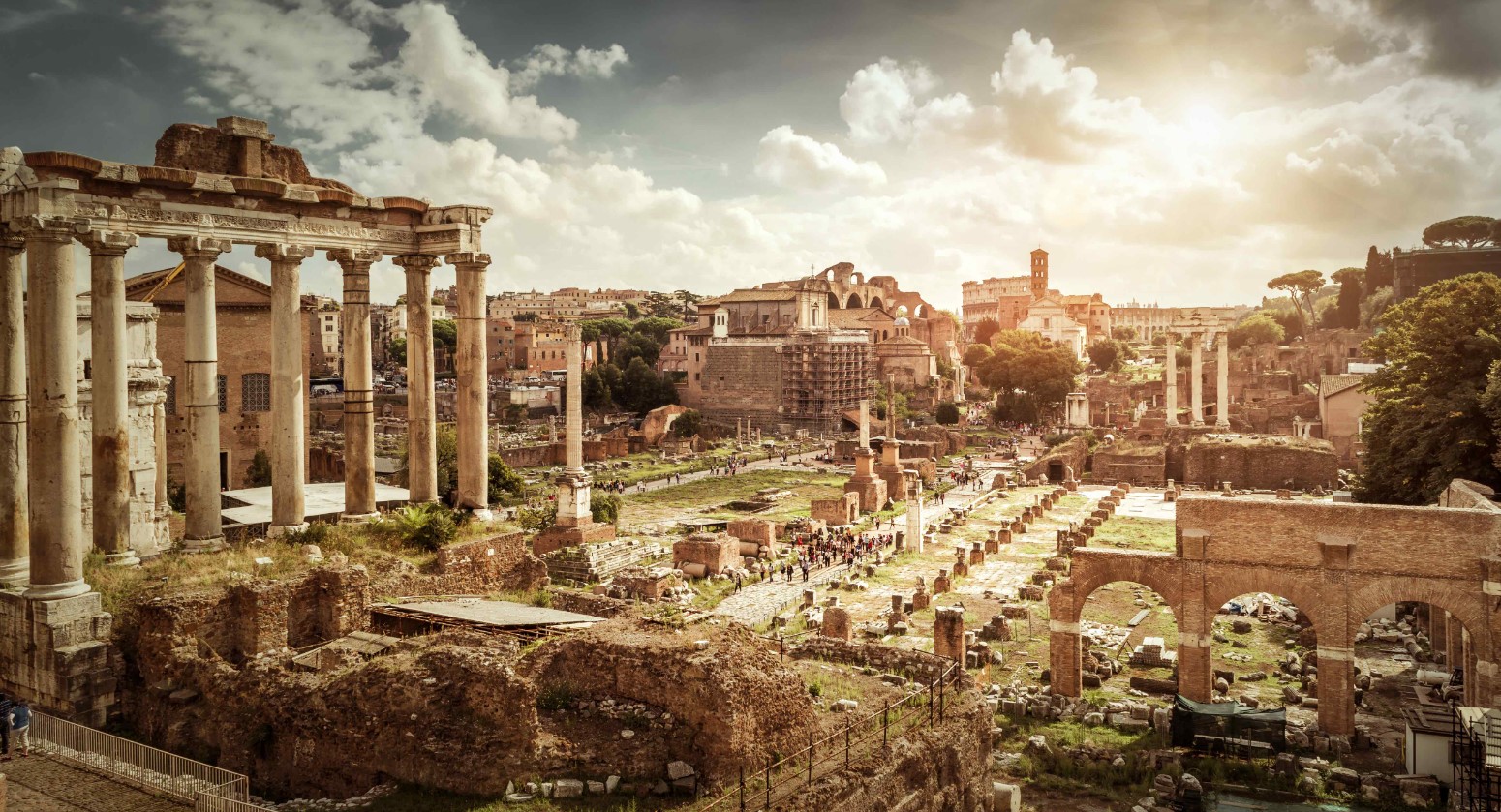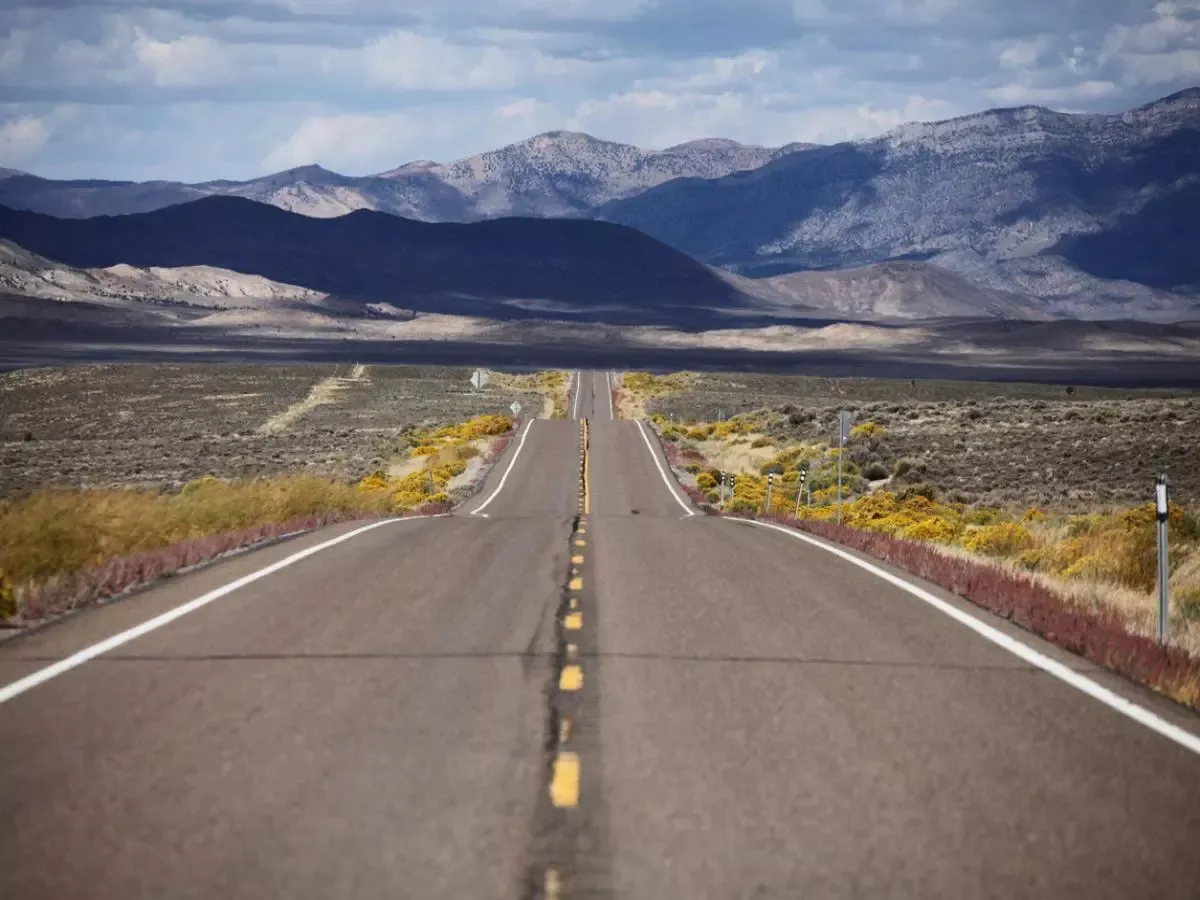
The United States spans an impressive and diverse landscape, featuring highways that stretch through mountains, deserts, forests, and coastlines.
For those who enjoy the open road, these highways offer a chance to experience some of the most striking regions in the country.
For anyone interested in discovering the United States by car, understanding these highways can make all the difference.
Driving offers a unique perspective that planes overlook, allowing travelers to see changing scenery, stop at local spots, and uncover hidden treasures.
Taking a road trip reveals each location in a way that brings a special connection to the journey.
This article presents the twelve longest highways in the United States.
- U.S. Route 20 – 3,365 miles
- U.S. Route 6 – 3,207 miles
- U.S. Route 30 – 3,073 miles
- Interstate 90 – 3,021 miles
- U.S. Route 50 – 3,011 miles
- Interstate 80 – 2,899 miles
- U.S. Route 60 – 2,670 miles
- U.S. Route 2 – 2,571 miles
- Interstate 40 – 2,555 miles
- U.S. Route 12 – 2,484 miles
- U.S. Route 1 – 2,369 miles
- U.S. Route 41 – 2,008 miles
1. U.S. Route 20
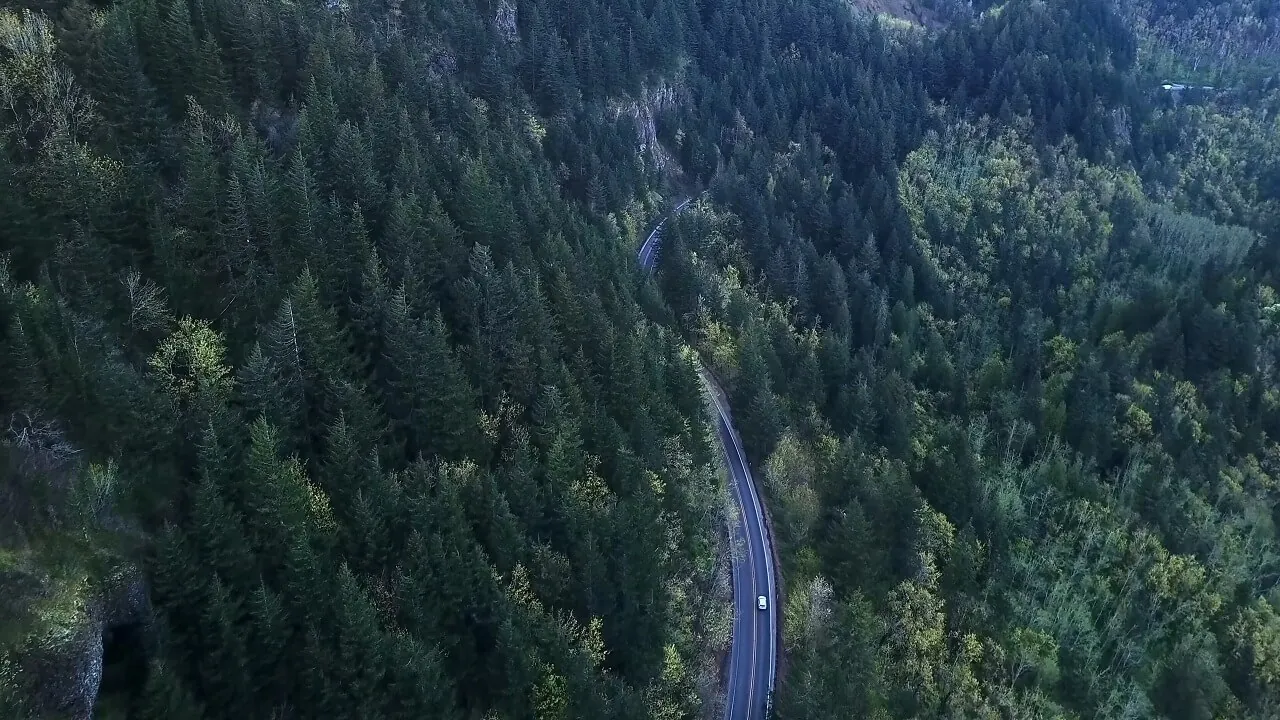
| Length | 3,365 miles |
| Western Terminus | Newport, Oregon |
| Eastern Terminus | Boston, Massachusetts |
| States Covered | Oregon, Idaho, Montana, Wyoming, Nebraska, Iowa, Illinois, Indiana, Ohio, Pennsylvania, New York, Massachusetts |
| Notable Cities | Portland, Chicago, Cleveland, Boston |
| Established | 1926 |
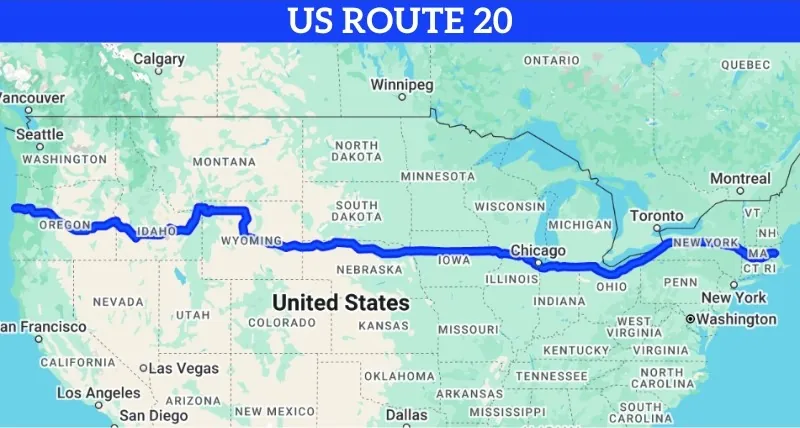
U.S. Route 20, the longest road in the country, stretches from coast to coast, beginning in Newport, Oregon, and ending in Boston, Massachusetts. Covering 3,365 miles, this highway takes travelers on a journey through some of America’s most diverse regions, from the rocky Pacific Northwest to the bustling streets of Boston.
Known as the “Big Daddy” of U.S. highways, Route 20 passes through twelve states, each offering unique sights, landscapes, and cultural landmarks along the way. It’s an ideal route for those looking to experience the true breadth of the United States.
Sights to See Along U.S. Route 20
Crater Lake National Park, Oregon
Starting on the western end, Route 20 brings travelers close to Crater Lake National Park, famous for its deep blue waters and stunning caldera. The park offers opportunities for hiking, photography, and experiencing one of the most scenic locations in Oregon.
Yellowstone National Park, Wyoming
As you travel further east, Route 20 leads to the entrance of Yellowstone National Park, one of the most iconic natural attractions in the country. Known for its geysers, hot springs, and wildlife, Yellowstone offers an unforgettable experience in nature’s grandeur.
Chicago, Illinois
In Illinois, Route 20 takes you through Chicago, a vibrant city with renowned architecture, museums, and food. It’s an ideal stop to explore city life, enjoy a famous Chicago deep-dish pizza, and see landmarks like Millennium Park and the Art Institute of Chicago.
Finger Lakes, New York
Continuing east, you’ll find the Finger Lakes region in New York, famous for its stunning lakes, wineries, and charming small towns. This area is a perfect spot for relaxing by the water or sampling local wines.
Boston, Massachusetts
Route 20 concludes in historic Boston, where travelers can explore landmarks such as the Freedom Trail, Boston Common, and the Boston Tea Party Ships. Boston’s rich history and cultural scene make it a fitting end to this coast-to-coast journey.
2. U.S. Route 6
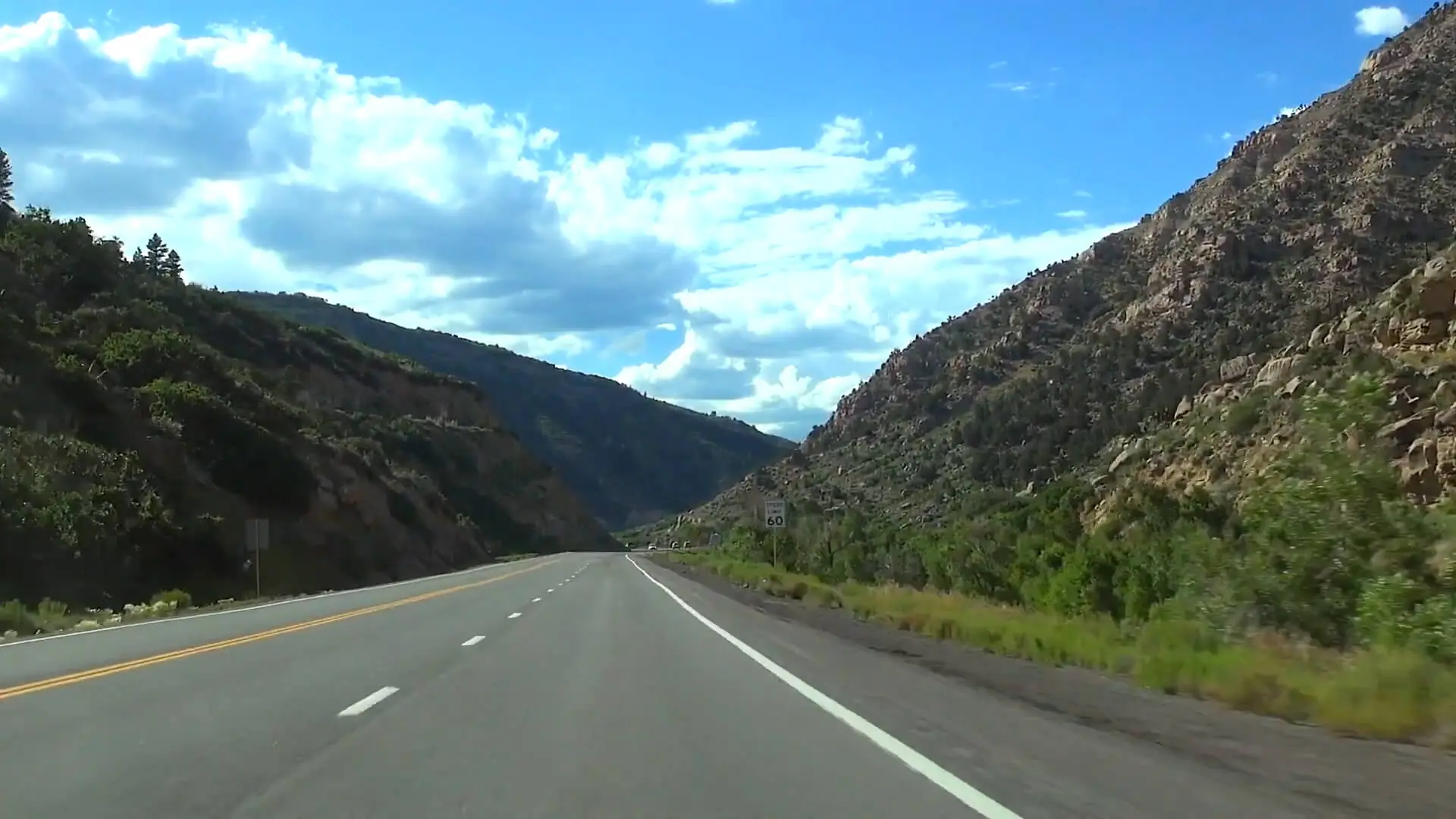
| Length | 3,207 miles |
| Western Terminus | Bishop, California |
| Eastern Terminus | Provincetown, Massachusetts |
| States Covered | California, Nevada, Utah, Colorado, Nebraska, Iowa, Illinois, Indiana, Ohio, Pennsylvania, New York, Connecticut, Rhode Island, Massachusetts |
| Notable Cities | Denver, Cleveland, Des Moines, Providence |
| Established | 1936 |
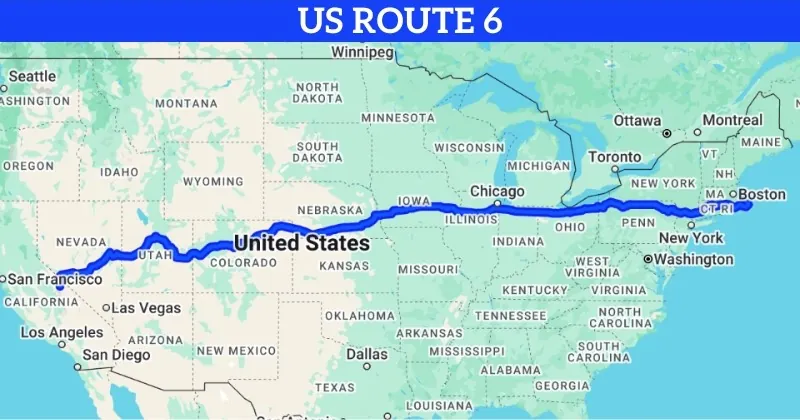
U.S. Route 6, also known as the “Grand Army of the Republic Highway,” stretches 3,207 miles from Bishop, California, to Provincetown, Massachusetts. This highway traverses a remarkable variety of landscapes, from California’s rugged Sierra Nevada mountains to the Atlantic coast of Massachusetts.
Route 6 is a historic route with roots in America’s early road-building era and takes travelers through fourteen states, each offering unique attractions and scenery.
Sights to See Along U.S. Route 6
Sierra Nevada Mountains, California
Starting in Bishop, California, Route 6 brings travelers close to the scenic Sierra Nevada range. This area offers incredible views, hiking opportunities, and access to sites like Yosemite National Park, just a short drive away.
Rocky Mountain National Park, Colorado
As Route 6 crosses into Colorado, travelers can take a detour to Rocky Mountain National Park, known for its towering peaks and diverse wildlife. This park is ideal for those seeking outdoor adventure and offers scenic drives, hiking trails, and breathtaking viewpoints.
Des Moines, Iowa
Midway through the journey, Route 6 passes through Des Moines, Iowa. This city offers a charming stop with its historic Capitol building, local markets, and vibrant art scene, adding a touch of Midwest hospitality to the trip.
Cuyahoga Valley National Park, Ohio
In Ohio, travelers can explore Cuyahoga Valley National Park, a hidden gem with lush forests, waterfalls, and scenic train rides. It’s a peaceful and beautiful area for those looking to escape into nature for a while.
Provincetown, Massachusetts
Route 6 ends in Provincetown, a picturesque town at the tip of Cape Cod known for its artistic vibe, coastal views, and rich maritime history. With its beaches, galleries, and historic sites, Provincetown makes for a memorable end to this cross-country journey.
3. U.S. Route 30
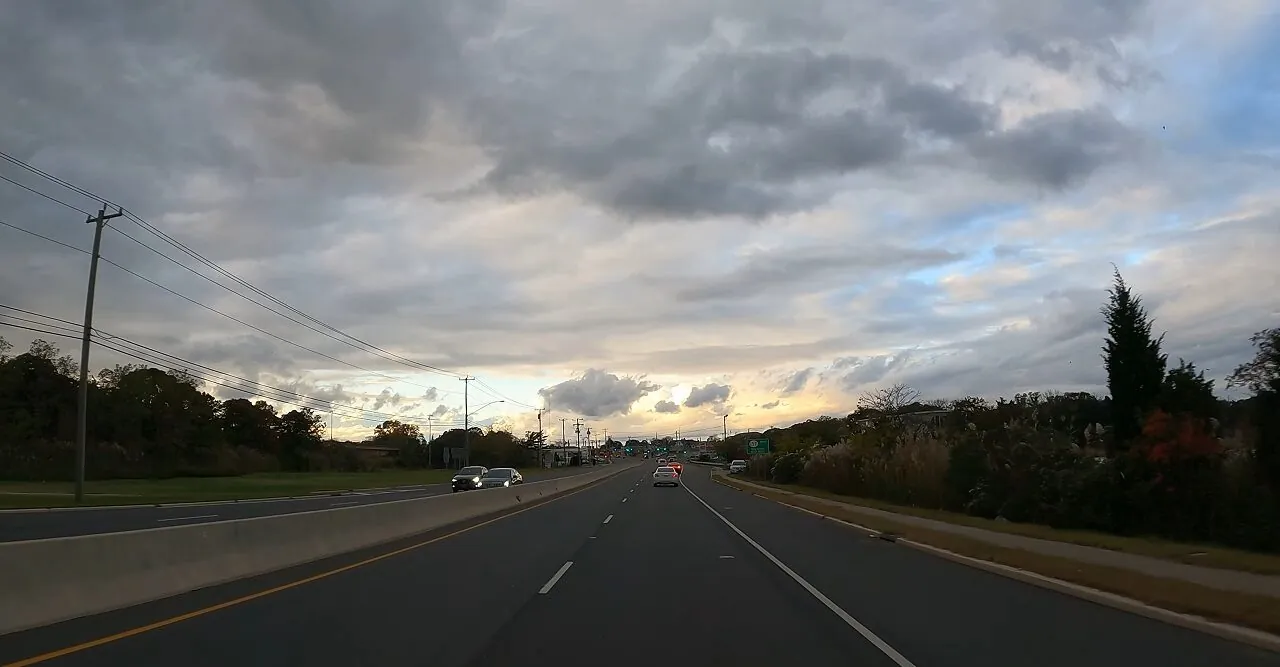
| Length | 3,073 miles |
| Western Terminus | Astoria, Oregon |
| Eastern Terminus | Atlantic City, New Jersey |
| States Covered | Oregon, Idaho, Wyoming, Nebraska, Iowa, Illinois, Indiana, Ohio, Pennsylvania, New Jersey |
| Notable Cities | Portland, Fort Wayne, Chicago, Philadelphia |
| Established | 1926 |
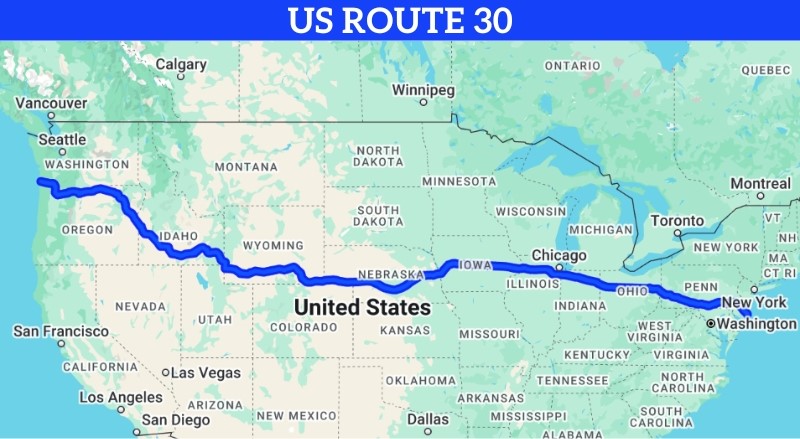
U.S. Route 30 spans 3,073 miles across the northern United States, beginning on the Pacific coast in Astoria, Oregon, and concluding on the Atlantic coast in Atlantic City, New Jersey. Often referred to as the “Lincoln Highway” on certain segments, this road is one of America’s oldest transcontinental highways.
Route 30 travels through a mix of rural and urban landscapes, connecting a variety of cities, towns, and scenic areas that provide a rich perspective on the diversity of American life.
Sights to See Along U.S. Route 30
Columbia River Gorge, Oregon
At the western start, travelers can experience the Columbia River Gorge. This scenic area features stunning waterfalls, dense forests, and spectacular viewpoints along the river. It’s ideal for anyone seeking a peaceful start to their journey.
Fort Wayne, Indiana
Further along in Indiana, U.S. Route 30 passes through Fort Wayne. This city offers unique attractions like the Fort Wayne Children’s Zoo and Science Central, along with a welcoming downtown filled with local shops and cafes.
Chicago, Illinois
Route 30 provides access to Chicago, one of the most vibrant cities on the route. Travelers can explore renowned spots like Millennium Park, the Art Institute of Chicago, and the Chicago Riverwalk. Chicago offers a vibrant blend of art, architecture, and iconic food stops.
Gettysburg National Military Park, Pennsylvania
In Pennsylvania, Route 30 leads to Gettysburg, where travelers can visit the historic Gettysburg National Military Park. The site offers a chance to explore key Civil War landmarks, making it a meaningful stop for history enthusiasts.
Atlantic City, New Jersey
The journey concludes in Atlantic City, a lively coastal town known for its boardwalk, beaches, and entertainment options. With its bustling atmosphere and seaside views, Atlantic City offers a fitting end to the transcontinental adventure.
4. Interstate 90
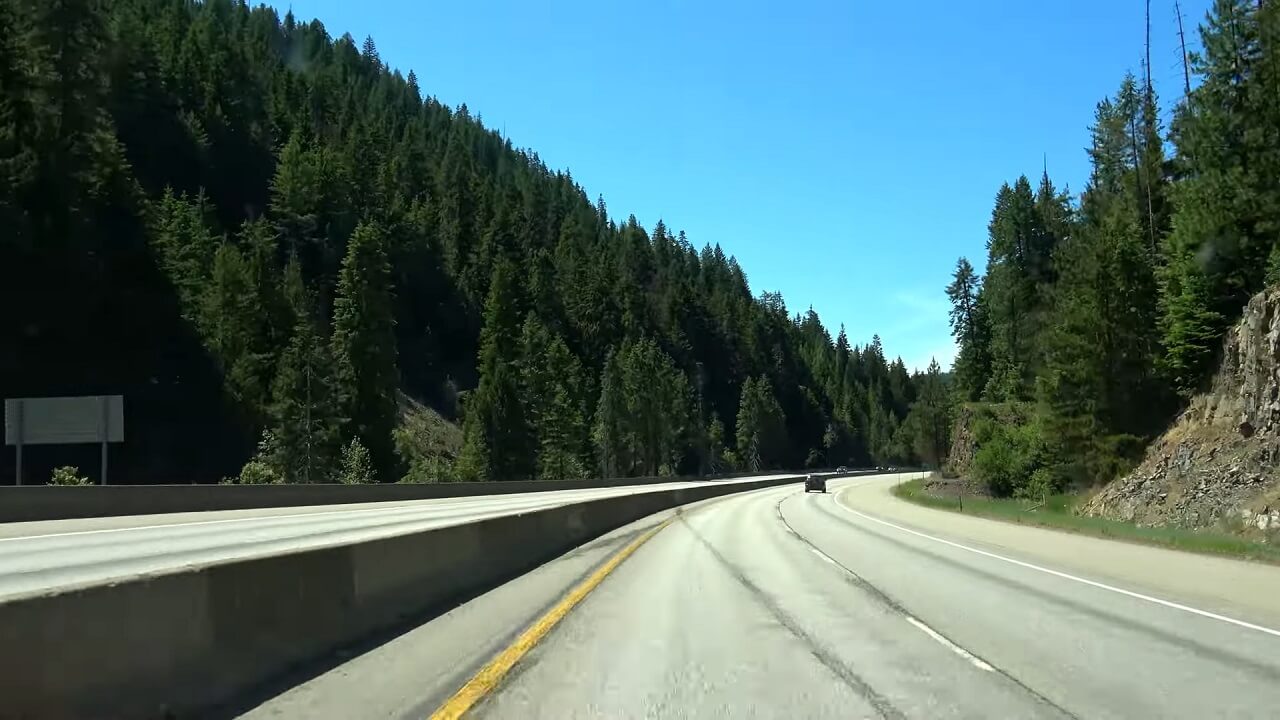
| Length | 3,021 miles |
| Western Terminus | Seattle, Washington |
| Eastern Terminus | Boston, Massachusetts |
| States Covered | Washington, Idaho, Montana, Wyoming, South Dakota, Minnesota, Wisconsin, Illinois, Indiana, Ohio, Pennsylvania, New York, Massachusetts |
| Notable Cities | Seattle, Chicago, Cleveland, Boston |
| Established | 1956 |
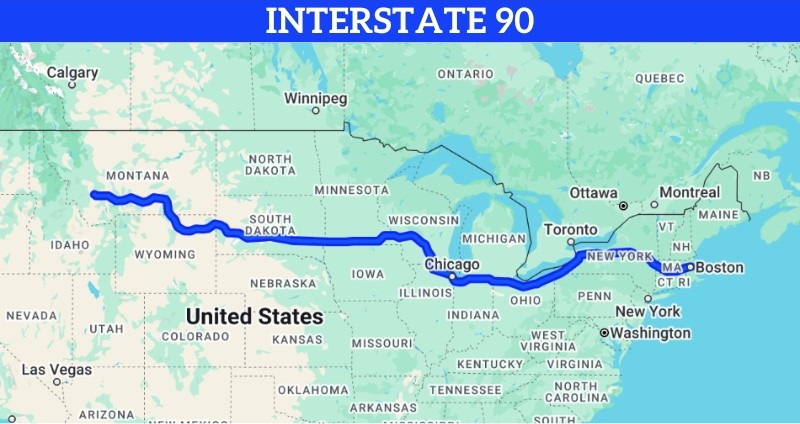
Interstate 90 (I-90) spans 3,021 miles, making it the longest interstate in the U.S. This major route runs from Seattle, Washington, to Boston, Massachusetts, connecting the Pacific Northwest with the northeastern U.S. I-90 travels through thirteen states, cutting across the Northern Plains, the Great Lakes region, and into New England.
Known for both its urban and rural stretches, I-90 offers travelers a direct path to explore diverse landscapes, national landmarks, and some of America’s largest cities.
Here is a fun fact to know about Washington – They recently adopted two pandas from China. So, another reason to plan your next trip there.
Sights to See Along Interstate 90
Seattle, Washington
Starting in Seattle, I-90 begins near iconic attractions such as the Space Needle and Pike Place Market. Seattle’s vibrant city life, waterfront views, and renowned coffee culture make it an exciting starting point for this long journey east.
Badlands National Park, South Dakota
Further along I-90, travelers can visit Badlands National Park in South Dakota. Known for its striking rock formations and rich fossil beds, this park offers a unique landscape and plenty of opportunities for hiking and photography.
Chicago, Illinois
In Illinois, I-90 passes through Chicago, giving travelers a chance to explore the city’s skyline, cultural institutions, and famous deep-dish pizza. Must-see spots include the Art Institute of Chicago, Millennium Park, and Navy Pier, offering a blend of art, nature, and urban charm.
Niagara Falls, New York
Just off I-90, Niagara Falls serves as a dramatic natural landmark that is worth the detour. With its powerful waterfalls and surrounding parks, Niagara Falls offers stunning views and boat tours for those who want to get close to the falls.
Boston, Massachusetts
I-90 concludes in historic Boston, known for its colonial history, cobblestone streets, and vibrant neighborhoods. Travelers can explore the Freedom Trail, Quincy Market, and Boston Common, making this a memorable end to a cross-country adventure.
5. U.S. Route 50
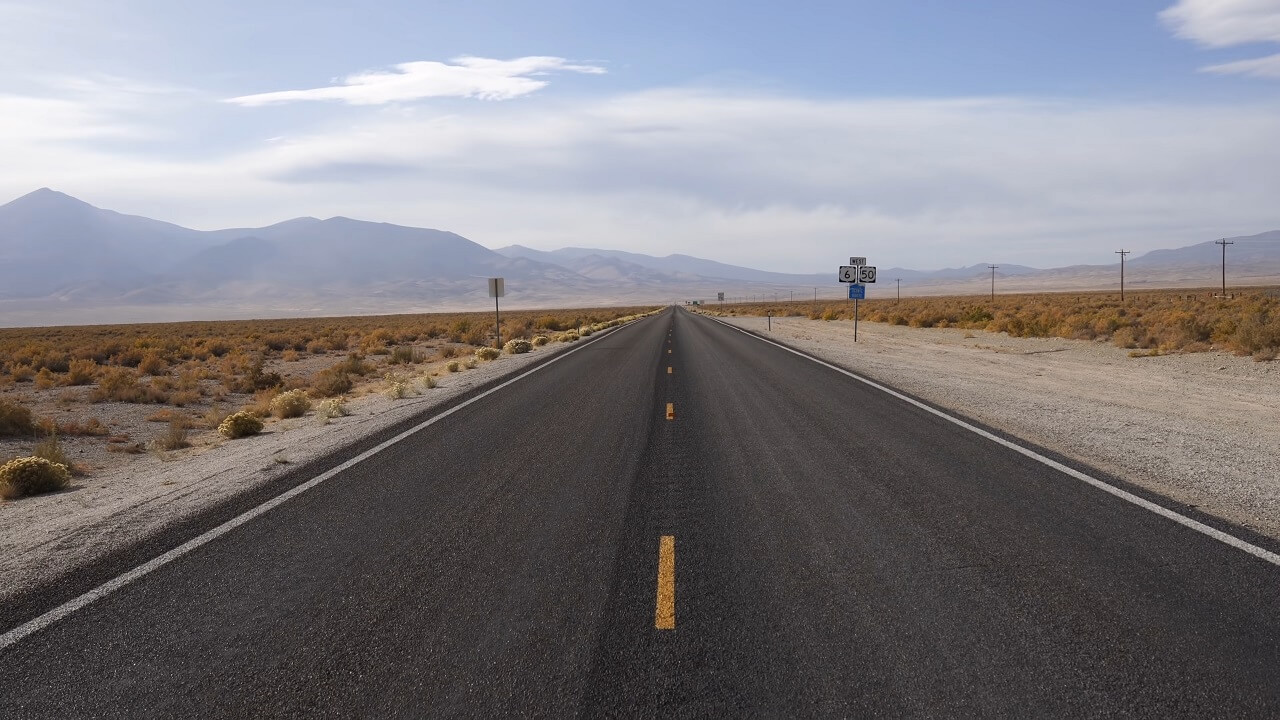
| Length | 3,011 miles |
| Western Terminus | Sacramento, California |
| Eastern Terminus | Ocean City, Maryland |
| States Covered | California, Nevada, Utah, Colorado, Kansas, Missouri, Illinois, Indiana, Ohio, West Virginia, Virginia, Maryland |
| Notable Cities | Sacramento, Kansas City, St. Louis, Cincinnati |
| Established | 1926 |
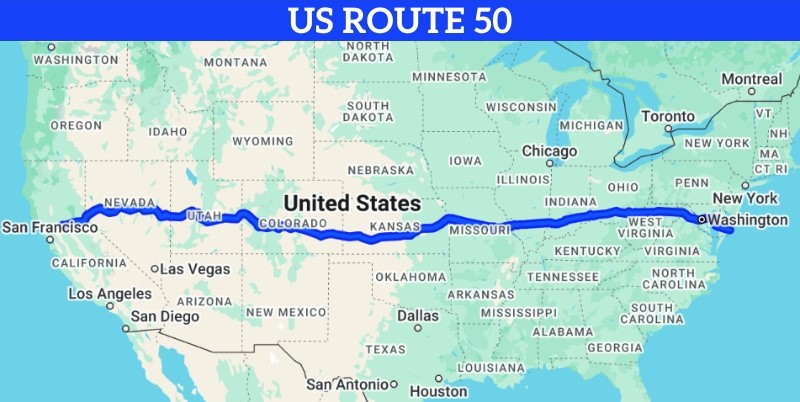
U.S. Route 50, often called “The Loneliest Road in America,” stretches 3,011 miles from Sacramento, California, to Ocean City, Maryland. This iconic route traverses a wide array of American landscapes, including deserts, mountains, plains, and historical towns.
Known for its stretches of remote and scenic highway, Route 50 is perfect for travelers looking for both solitude and adventure across America’s diverse terrains.
Sights to See Along U.S. Route 50
Lake Tahoe, California
Starting near Sacramento, Route 50 takes travelers close to Lake Tahoe, a stunning alpine lake known for its crystal-clear waters and surrounding mountains. Visitors can enjoy activities like hiking, boating, or simply taking in the breathtaking views of this natural gem.
Great Basin National Park, Nevada
In Nevada, Route 50 crosses through the Great Basin National Park, a quiet and lesser-visited park known for its ancient bristlecone pines, limestone caves, and high desert beauty. This stop offers a serene look at one of the country’s most unique landscapes.
Kansas City, Missouri
As Route 50 passes through Missouri, travelers can stop in Kansas City, a lively city known for its jazz heritage, barbecue, and historic districts. It’s a vibrant cultural stop, offering a taste of the Midwest’s urban charm.
Hocking Hills State Park, Ohio
Further along in Ohio, Route 50 provides access to Hocking Hills State Park. Known for its rugged cliffs, waterfalls, and deep gorges, this park offers excellent opportunities for hiking and outdoor exploration, making it a refreshing stop for nature enthusiasts.
Ocean City, Maryland
The eastern end of Route 50 concludes in Ocean City, Maryland. Known for its boardwalk, beaches, and lively seaside atmosphere, Ocean City is a popular destination for relaxation and recreation, providing an enjoyable finale to the cross-country drive.
6. Interstate 80
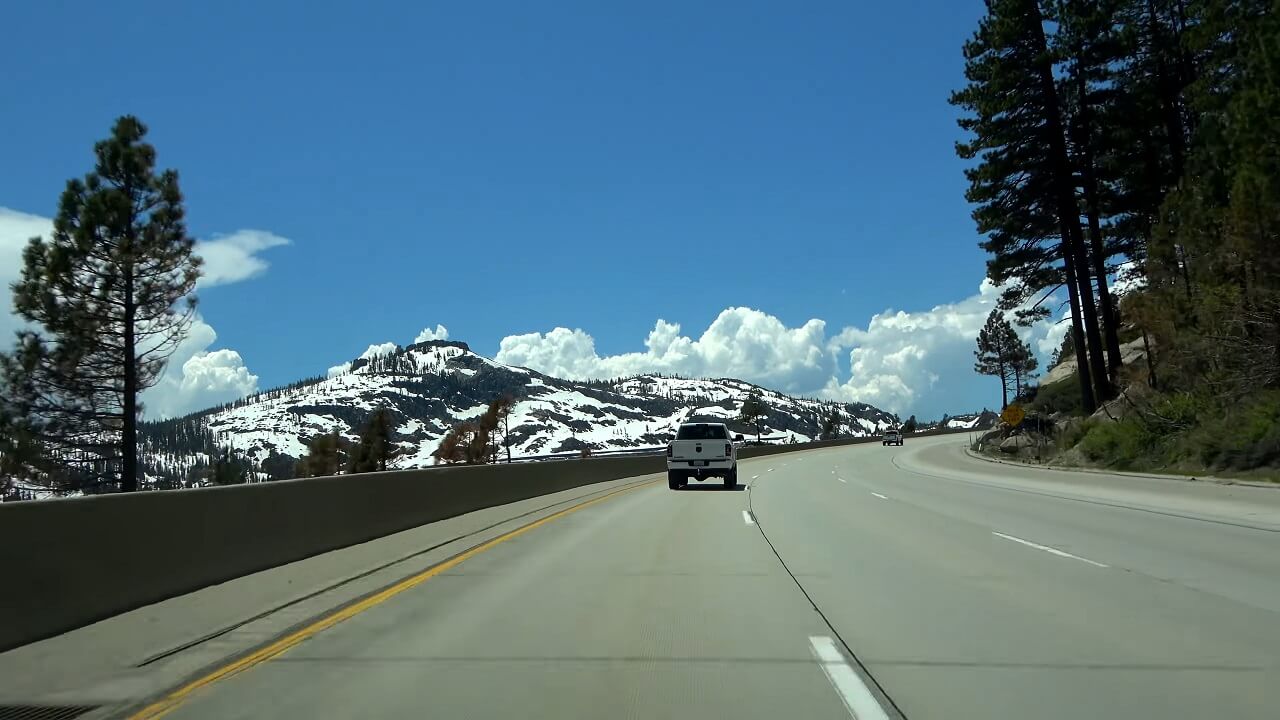
| Length | 2,899 miles |
| Western Terminus | San Francisco, California |
| Eastern Terminus | Teaneck, New Jersey |
| States Covered | California, Nevada, Utah, Wyoming, Nebraska, Iowa, Illinois, Indiana, Ohio, Pennsylvania, New Jersey |
| Notable Cities | San Francisco, Salt Lake City, Omaha, Chicago |
| Established | 1956 |
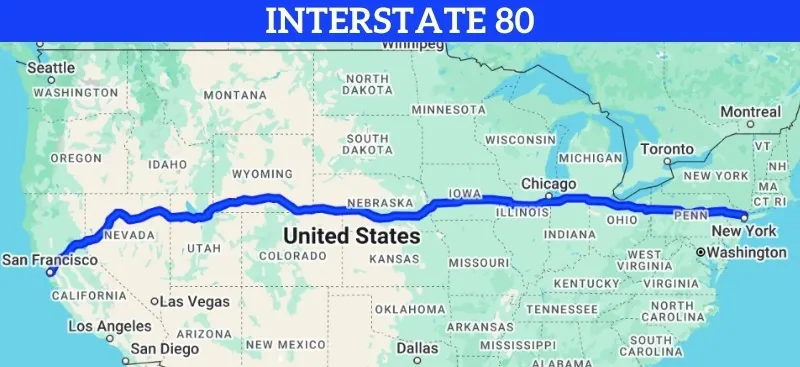
Interstate 80 (I-80) covers 2,899 miles, stretching from San Francisco, California, to Teaneck, New Jersey. This transcontinental route serves as one of the main thoroughfares across the United States, paralleling parts of the historic Lincoln Highway.
I-80 traverses diverse landscapes, including the Sierra Nevada mountains, the expansive plains, and industrial cities of the Midwest. It’s an essential route for anyone interested in seeing the contrasting regions and iconic landmarks spread across the northern U.S.
Sights to See Along Interstate 80
Golden Gate Bridge, San Francisco
I-80 begins in San Francisco, allowing travelers to start their journey with a view of the Golden Gate Bridge and nearby Fisherman’s Wharf. This city offers an iconic blend of historic and cultural attractions, providing a memorable beginning for the cross-country route.
Bonneville Salt Flats, Utah
Further along I-80, travelers pass through the Bonneville Salt Flats in Utah, known for their otherworldly landscape and land speed records. This wide, open expanse creates a unique photo opportunity and showcases the high desert’s stark beauty.
Chicago, Illinois
As I-80 continues east, it passes through Chicago, where travelers can explore the city’s renowned museums, waterfront views, and unique culinary scene. Chicago provides a vibrant stop with endless attractions, from architecture tours to famous deep-dish pizza.
Indiana Dunes National Park, Indiana
Located on Lake Michigan’s southern shore, Indiana Dunes National Park offers sandy beaches, hiking trails, and scenic dunes. It’s a peaceful spot to take a break from the drive and enjoy the natural beauty of the Great Lakes region.
Delaware Water Gap, Pennsylvania
In Pennsylvania, I-80 leads to the Delaware Water Gap, a scenic area where the Delaware River cuts through a mountain ridge. The area features hiking, canoeing, and overlooks that capture the natural charm of the Appalachian Mountains.
7. U.S. Route 60
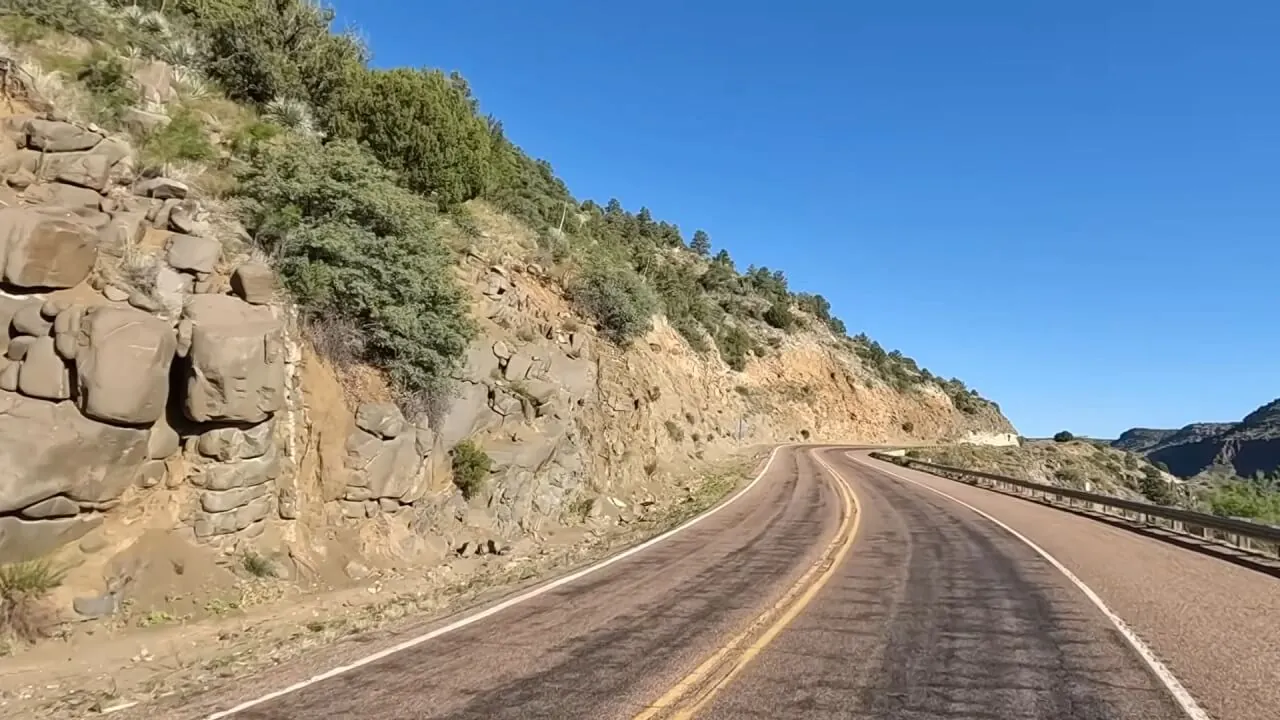
| Length | 2,670 miles |
| Western Terminus | Brenda, Arizona |
| Eastern Terminus | Virginia Beach, Virginia |
| States Covered | Arizona, New Mexico, Texas, Oklahoma, Missouri, Kentucky, West Virginia, Virginia |
| Notable Cities | Phoenix, Amarillo, Louisville, Charleston |
| Established | 1926 |
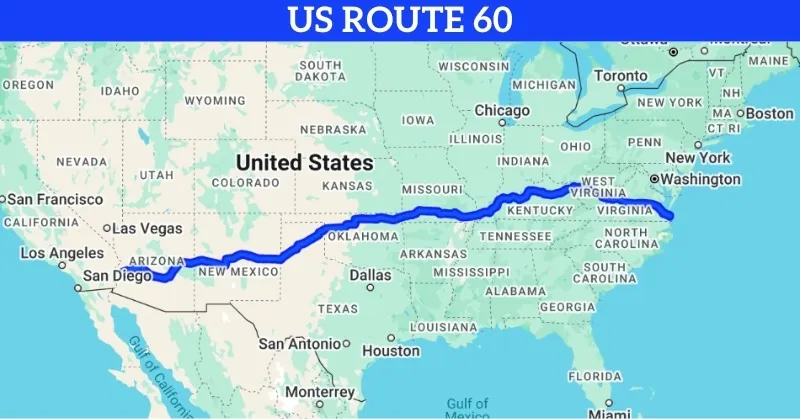
U.S. Route 60 stretches 2,670 miles, connecting the deserts of Arizona to the Atlantic shores of Virginia. Known for its scenic and varied route, Route 60 travels through mountain ranges, farmlands, and historic towns across eight states.
Originally part of the main route to California before the interstates, Route 60 remains a beloved highway for those seeking a blend of quiet backroads and scenic landscapes.
Sights to See Along U.S. Route 60
Tonto National Forest, Arizona
Beginning in Arizona, Route 60 passes through the Tonto National Forest. This area offers lush forests, desert landscapes, and scenic mountain views, providing an exciting start to the journey.
Cadillac Ranch, Amarillo, Texas
In Texas, Route 60 brings travelers near Amarillo, where they can visit the famous Cadillac Ranch. This quirky roadside attraction features ten half-buried, graffiti-covered Cadillacs and has become a popular stop along the highway.
Daniel Boone National Forest, Kentucky
As Route 60 crosses into Kentucky, travelers can explore the scenic Daniel Boone National Forest. Known for its cliffs, waterfalls, and trails, this forest offers a peaceful retreat into nature and is an ideal stop for outdoor enthusiasts.
Charleston, West Virginia
Further east, Route 60 passes through Charleston, the capital of West Virginia. Here, visitors can explore the state’s history, take a stroll along the Kanawha River, or visit the State Capitol building, known for its gold dome.
Virginia Beach, Virginia
The journey concludes in Virginia Beach, where travelers can enjoy the oceanfront, boardwalk, and vibrant seaside attractions. Virginia Beach’s sandy shores and relaxed vibe offer the perfect ending to a cross-country drive.
8. U.S. Route 2
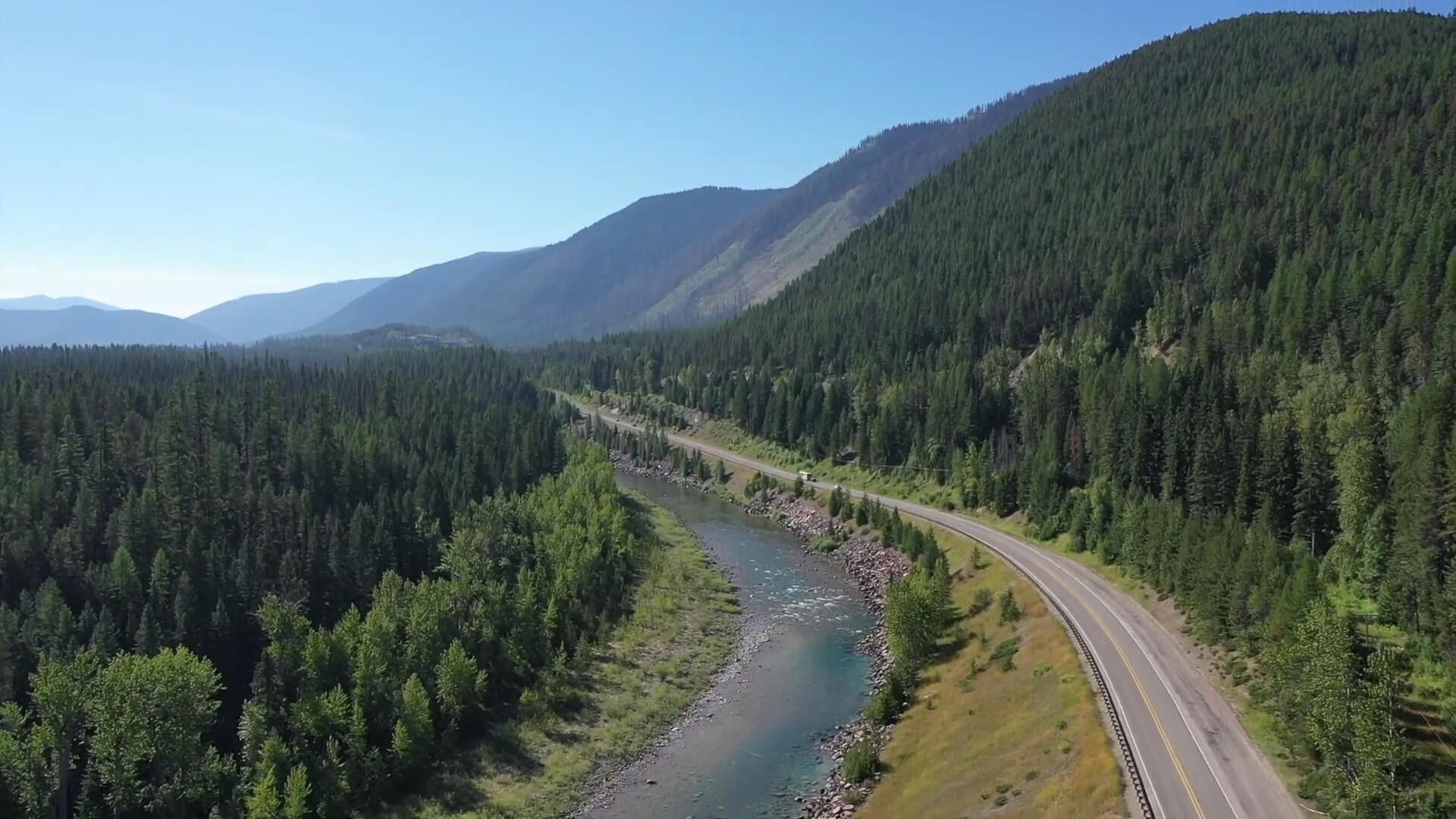
| Length | 2,571 miles |
| Western Terminus | Everett, Washington |
| Eastern Terminus | Houlton, Maine |
| States Covered | Washington, Idaho, Montana, North Dakota, Minnesota, Wisconsin, Michigan, Vermont, New Hampshire, Maine |
| Notable Cities | Spokane, Duluth, Grand Forks, Bangor |
| Established | 1926 |
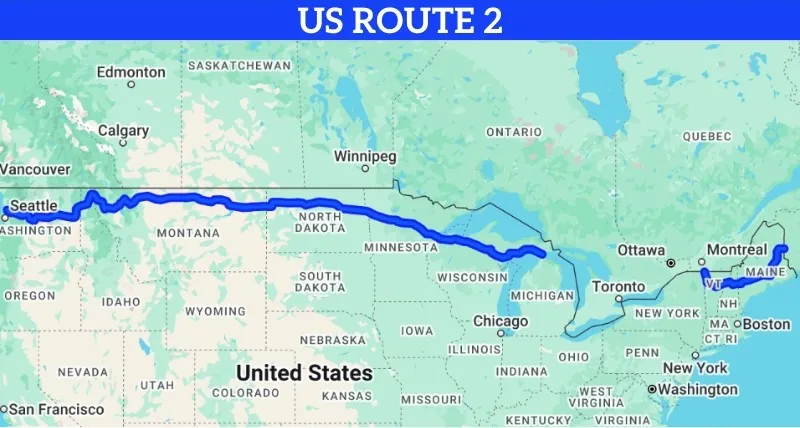
U.S. Route 2 spans 2,571 miles across the northern United States, from the Pacific Northwest in Washington to the far northeastern corner of Maine. Known as the “Great Northern,” this route offers an off-the-beaten-path experience, taking travelers through rural communities, national parks, and scenic forests.
For those who enjoy quieter highways with a backdrop of beautiful landscapes, Route 2 provides a memorable journey.
Sights to See Along U.S. Route 2
Glacier National Park, Montana
In Montana, Route 2 passes near Glacier National Park. Known for its rugged mountains, pristine lakes, and diverse wildlife, this park offers some of the most stunning natural scenery in the United States, making it a must-see stop for nature lovers.
Theodore Roosevelt National Park, North Dakota
As Route 2 continues east, it brings travelers close to Theodore Roosevelt National Park in North Dakota. This park, with its rolling hills, badlands, and bison herds, showcases the beauty of the Great Plains and preserves the landscapes that inspired Roosevelt’s conservation efforts.
Lake Superior, Minnesota
In Minnesota, Route 2 travels along the southern shore of Lake Superior. This area offers breathtaking views of the largest freshwater lake in the world, with opportunities for hiking, boating, and enjoying the lakeside scenery.
White Mountain National Forest, New Hampshire
Further along in New Hampshire, travelers on Route 2 can explore the White Mountain National Forest, known for its forests, hiking trails, and picturesque views, especially during the fall season.
Houlton, Maine
The eastern end of Route 2 concludes in Houlton, Maine, a quiet town that serves as a gateway to the dense forests and wild beauty of northern Maine. It’s a fitting end for those who seek to experience the solitude and scenic views of the American northeast.
9. Interstate 40
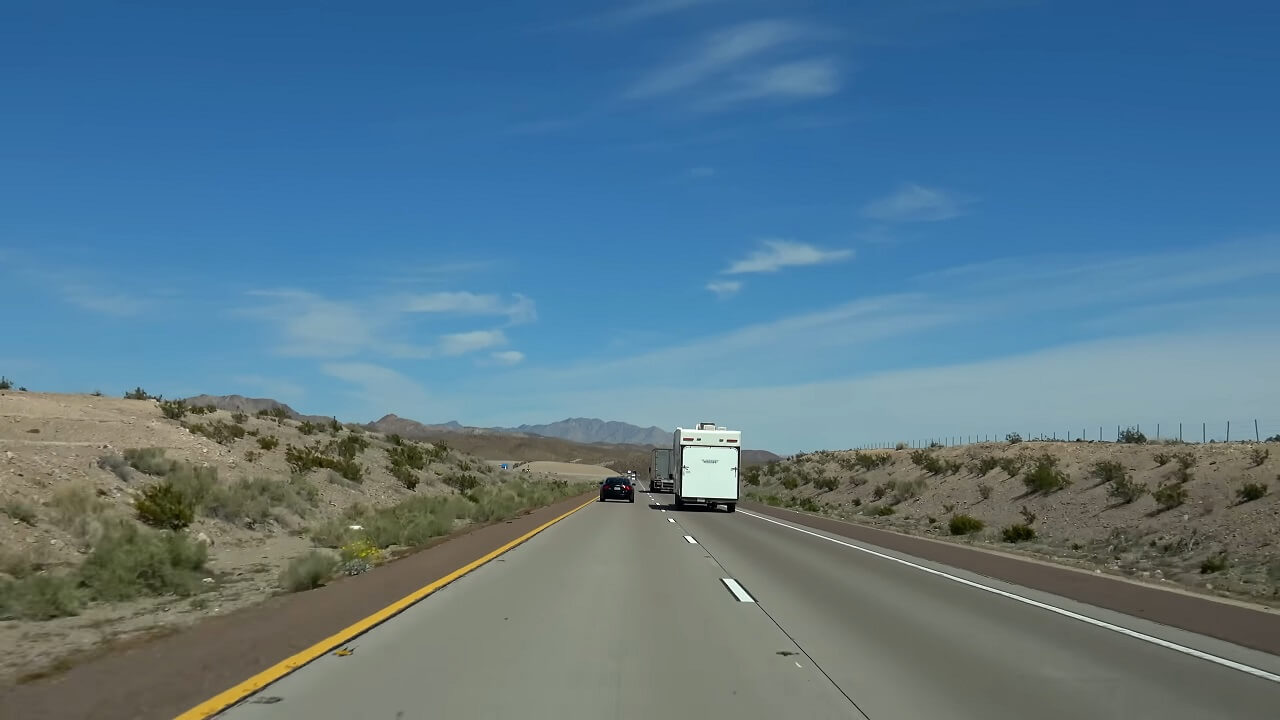
| Length | 2,555 miles |
| Western Terminus | Barstow, California |
| Eastern Terminus | Wilmington, North Carolina |
| States Covered | California, Arizona, New Mexico, Texas, Oklahoma, Arkansas, Tennessee, North Carolina |
| Notable Cities | Albuquerque, Oklahoma City, Memphis, Nashville |
| Established | 1957 |
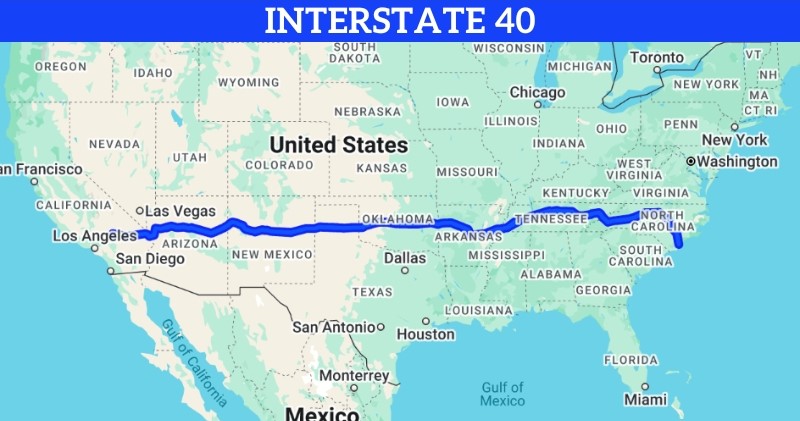
Interstate 40 (I-40) stretches 2,555 miles from the deserts of California to the coastal plains of North Carolina. Known for its historic alignment with much of the original Route 66, I-40 passes through a diverse array of landscapes and cultural regions.
This interstate offers travelers the chance to explore both bustling cities and open countryside, making it an essential cross-country route for anyone looking to experience the southern United States.
Sights to See Along Interstate 40
Petrified Forest National Park, Arizona
In Arizona, I-40 brings travelers near Petrified Forest National Park, known for its colorful petrified wood and unique desert landscapes. This park provides a fascinating stop with scenic drives and trails that showcase ancient geological formations.
Albuquerque, New Mexico
As I-40 continues through New Mexico, it passes through Albuquerque, a city celebrated for its Southwestern charm, historic Old Town, and annual Balloon Fiesta. It’s a vibrant spot to enjoy local culture, cuisine, and art.
Oklahoma City, Oklahoma
I-40 goes through Oklahoma City, where travelers can explore the National Cowboy & Western Heritage Museum and the Oklahoma City National Memorial. Oklahoma City offers a blend of Western heritage and modern attractions, making it a unique stop along the route.
Great Smoky Mountains, Tennessee/North Carolina
In eastern Tennessee and western North Carolina, I-40 provides access to Great Smoky Mountains National Park. This park, famous for its mist-covered mountains, diverse wildlife, and rich history, offers countless trails, scenic drives, and opportunities to connect with nature.
Wilmington, North Carolina
The eastern end of I-40 concludes in Wilmington, a coastal city with historic charm, beaches, and a lively riverfront. Wilmington’s seaside attractions provide a relaxing and scenic end to a cross-country journey.
10. U.S. Route 12
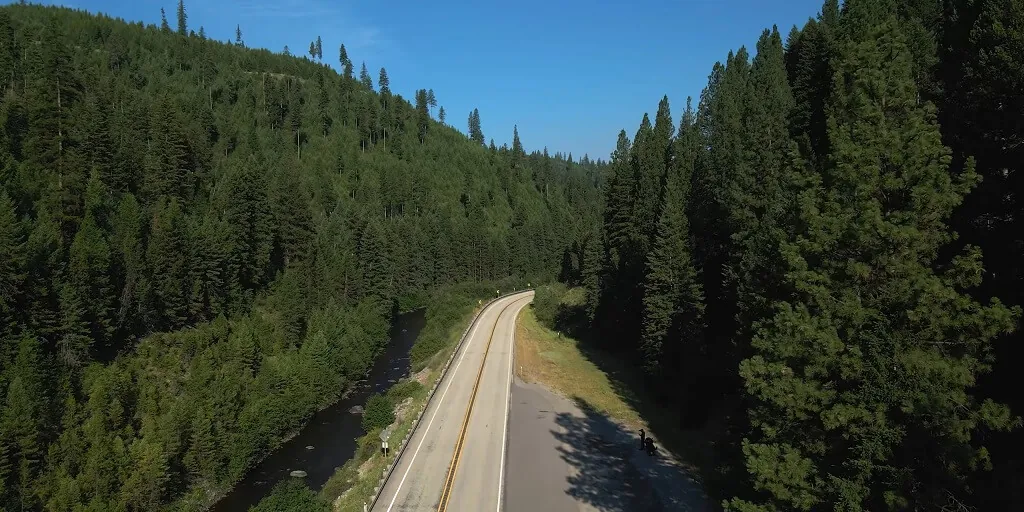
| Length | 2,484 miles |
| Western Terminus | Aberdeen, Washington |
| Eastern Terminus | Detroit, Michigan |
| States Covered | Washington, Idaho, Montana, North Dakota, South Dakota, Minnesota, Wisconsin, Illinois, Indiana, Michigan |
| Notable Cities | Minneapolis, Chicago, Gary, Detroit |
| Established | 1926 |
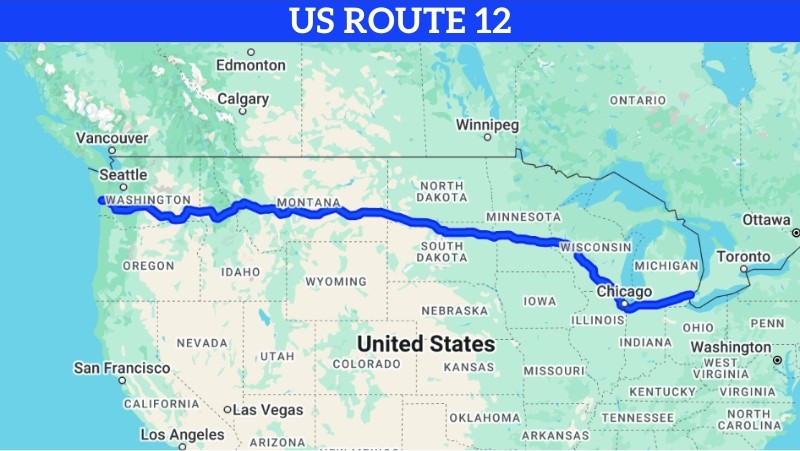
U.S. Route 12 spans 2,484 miles, running from Aberdeen, Washington, to Detroit, Michigan. This historic highway crosses through the northern United States, offering travelers a mix of mountain scenery, farmlands, and urban landscapes.
Route 12 is known for its rich history, following sections of the Lewis and Clark expedition route and passing through some of the most scenic areas in the northern Midwest.
Sights to See Along U.S. Route 12
Mount Rainier National Park, Washington
Starting in Washington, Route 12 provides access to Mount Rainier National Park. Known for its iconic snow-capped peak, dense forests, and wildflower-filled meadows, this park offers breathtaking views and numerous trails for outdoor enthusiasts.
Missoula, Montana
As Route 12 continues through Montana, it passes near Missoula, a city surrounded by stunning mountain landscapes. Missoula is a welcoming stop with a thriving arts scene, historic downtown, and outdoor activities along the Clark Fork River.
Wisconsin Dells, Wisconsin
In Wisconsin, Route 12 takes travelers through the Wisconsin Dells, a popular destination known for its scenic river, unique rock formations, and family-friendly attractions. This area is perfect for boating, hiking, and visiting its famous water parks.
Chicago, Illinois
Route 12 runs through Chicago, offering travelers a chance to experience the city’s renowned museums, architecture, and vibrant neighborhoods. Chicago’s mix of urban culture and lakeside beauty makes it a must-see stop on this route.
Detroit, Michigan
The eastern end of Route 12 concludes in Detroit, known for its rich automotive history, cultural institutions, and revitalized downtown. Travelers can explore the Detroit Institute of Arts, historic neighborhoods, and the Detroit Riverwalk, providing an exciting finish to this northern journey.
11. U.S. Route 1
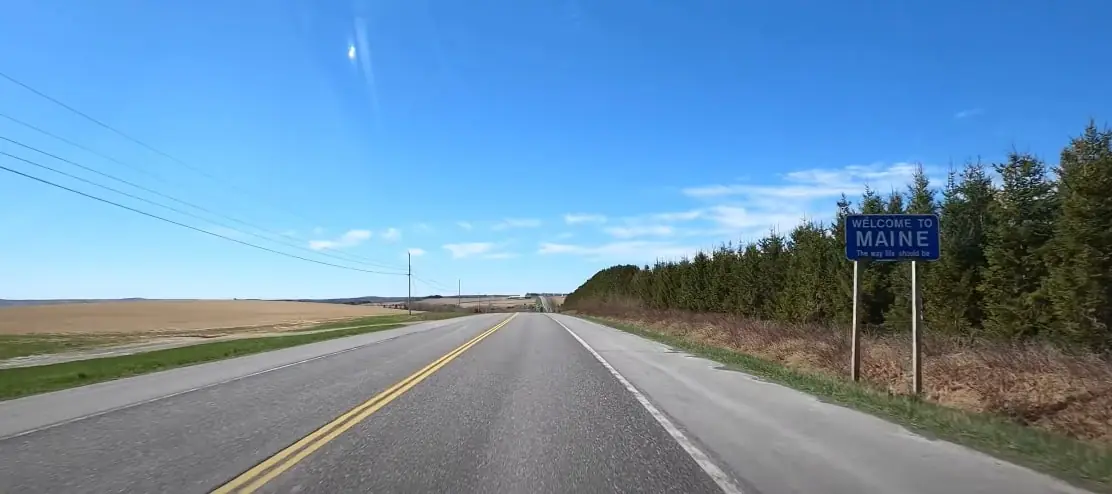
| Length | 2,369 miles |
| Northern Terminus | Fort Kent, Maine |
| Southern Terminus | Key West, Florida |
| States Covered | Maine, New Hampshire, Massachusetts, Rhode Island, Connecticut, New York, New Jersey, Pennsylvania, Delaware, Maryland, Virginia, North Carolina, South Carolina, Georgia, Florida |
| Notable Cities | Boston, New York City, Philadelphia, Miami |
| Established | 1926 |
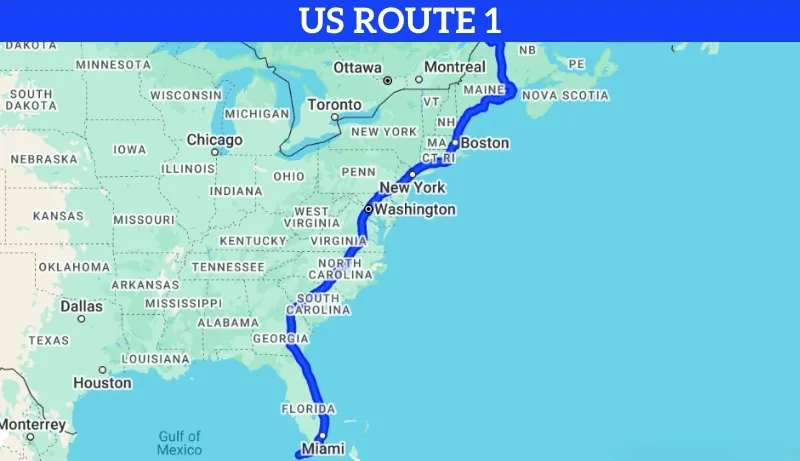
U.S. Route 1 spans 2,369 miles, running along the East Coast from Fort Kent, Maine, to Key West, Florida. Known as the “Atlantic Highway,” Route 1 passes through major cities, coastal towns, and historic sites, providing a unique way to explore the diversity of the eastern United States.
As one of the oldest and most historic routes, it offers travelers a front-row view to centuries of American history and culture.
Sights to See Along U.S. Route 1
Acadia National Park, Maine
Starting in Maine, Route 1 passes near Acadia National Park. This park is renowned for its rugged coastlines, forested trails, and views from Cadillac Mountain. It’s an ideal stop for nature enthusiasts seeking a peaceful beginning to their journey.
Boston, Massachusetts
Further south, Route 1 brings travelers into Boston, where they can explore historic landmarks like the Freedom Trail, Boston Common, and the Boston Tea Party Ships. Boston’s colonial history and lively cultural scene make it a fascinating city stop.
New York City, New York
As Route 1 passes through New York, it offers travelers the chance to experience New York City’s renowned attractions, from Times Square to Central Park. The city’s museums, landmarks, and unique neighborhoods provide endless options for exploration.
Washington, D.C.
In the nation’s capital, travelers can explore the National Mall, Lincoln Memorial, and Smithsonian museums. Washington, D.C., offers a blend of history and cultural attractions, making it a meaningful stop along the route.
Key West, Florida
The journey concludes in Key West, Florida, famous for its tropical atmosphere, colorful architecture, and vibrant nightlife. Key West’s beaches, lively Duval Street, and the Southernmost Point landmark provide a scenic and lively end to the cross-country route.
12. U.S. Route 41
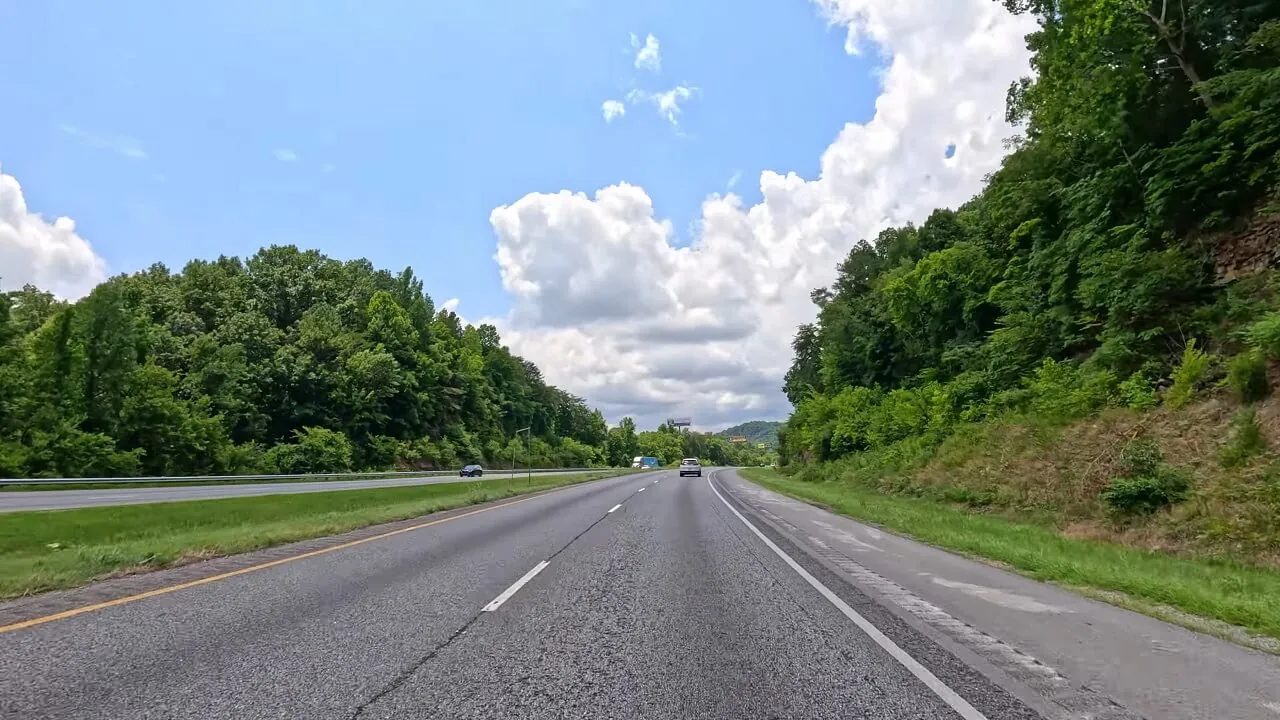
| Length | 2,008 miles |
| Northern Terminus | Copper Harbor, Michigan |
| Southern Terminus | Miami, Florida |
| States Covered | Michigan, Wisconsin, Illinois, Indiana, Kentucky, Tennessee, Georgia, Florida |
| Notable Cities | Chicago, Nashville, Atlanta, Miami |
| Established | 1926 |
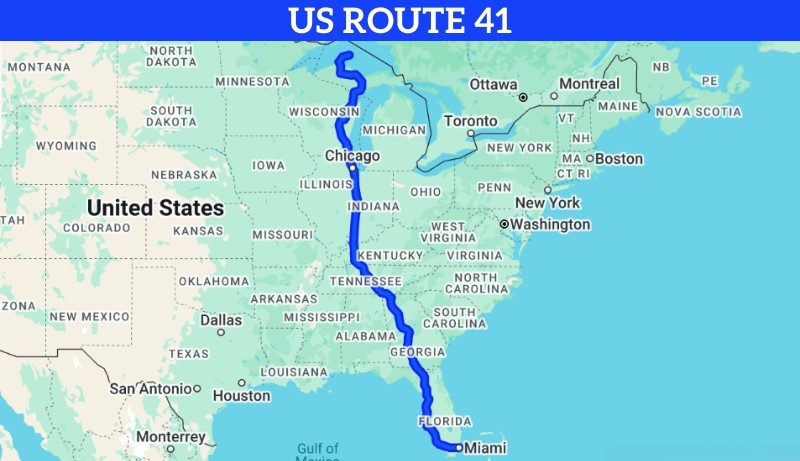
U.S. Route 41 spans 2,008 miles from the northern reaches of Michigan down to the tropical city of Miami, Florida. This route traverses a wide variety of landscapes, including the Great Lakes region, Appalachian foothills, and the sunny coasts of Florida.
Route 41 is known for its blend of urban centers and scenic countryside, making it an appealing choice for travelers who wish to experience both city life and natural beauty along the way.
Sights to See Along U.S. Route 41
Pictured Rocks National Lakeshore, Michigan
Starting near the top of Michigan, Route 41 offers access to Pictured Rocks National Lakeshore along Lake Superior. This area is known for its colorful cliffs, clear waters, and opportunities for kayaking, hiking, and exploring unique rock formations.
Chicago, Illinois
As Route 41 heads south, it passes through Chicago, where travelers can explore iconic attractions such as Millennium Park, the Art Institute of Chicago, and the Chicago Riverwalk. Chicago offers a bustling urban experience with a rich mix of art, food, and culture.
Mammoth Cave National Park, Kentucky
In Kentucky, Route 41 takes travelers near Mammoth Cave National Park, home to the world’s longest cave system. With guided tours and hiking trails, this park provides a fascinating underground adventure and a peaceful retreat into nature.
Nashville, Tennessee
Further south, Route 41 brings travelers through Nashville, the heart of country music. Nashville’s live music venues, historic sites, and vibrant downtown make it a lively stop filled with Southern charm.
Miami, Florida
Route 41 concludes in Miami, Florida, where travelers can enjoy the beaches, vibrant nightlife, and unique Art Deco architecture of South Beach. Miami’s tropical ambiance and cultural diversity make it an exciting end to this cross-country journey.
Why Route 66 is No Longer a Highway?
Route 66, often referred to as the “Mother Road,” was once the most famous highway in the United States, stretching from Chicago to Santa Monica and passing through numerous small towns, deserts, and scenic spots along the way.
Established in 1926, it became a symbol of freedom, adventure, and the spirit of the American road trip. However, Route 66 was officially removed from the U.S. Highway System in 1985. This change occurred because the interstate highway network, which began development in the 1950s, gradually replaced Route 66 with faster, more direct routes that bypassed many of the towns it had originally connected.
The construction of Interstate highways like I-40, I-44, and I-55 made the journey faster but left Route 66 largely obsolete, as travelers now preferred the more efficient roads. As a result, Route 66 was decommissioned and lost its official highway designation.
Although no longer an official highway, Route 66 remains a cherished route for nostalgic travelers, with many sections designated as “Historic Route 66.”
FAQs
How are U.S. highways different from interstates?
U.S. highways and interstates differ mainly in design, speed, and purpose. Interstates are limited-access highways with controlled entry and exit points, designed for faster, long-distance travel. U.S. highways, on the other hand, often pass through towns and cities, allowing for more local access and slower travel speeds.
What is the oldest U.S. highway?
The oldest U.S. highway is U.S. Route 1, which was established in 1926. It runs along the East Coast, connecting Maine to Florida and following some of the country’s oldest travel routes.
How are highway numbers chosen in the U.S.?
Highway numbers in the U.S. are based on a standardized system. East-west routes are typically even-numbered, with lower numbers in the north and higher numbers in the south. North-south routes are odd-numbered, with lower numbers in the east and higher numbers in the west.
Why are some highways called “scenic byways”?
Some highways are designated as “scenic byways” due to their natural beauty, historical significance, or cultural importance. These routes offer travelers unique views and experiences, encouraging exploration beyond the main highways.
Can you drive coast to coast on U.S. highways only?
Yes, it is possible to drive coast to coast using only U.S. highways, though it may take longer than using interstates. Routes like U.S. 20 and U.S. 50 offer coast-to-coast travel options for those interested in a scenic, historic journey.
Do all highways have tolls?
Not all highways have tolls. Tolls are typically found on specific interstates, expressways, and bridges to help fund maintenance. Most U.S. highways do not have tolls, allowing for free travel across the network.
What is the difference between a highway and a freeway?
A highway is a general term for any major road, while a freeway specifically refers to a high-speed road with no intersections, traffic signals, or cross streets. Freeways often have multiple lanes and are designed for uninterrupted travel, unlike many highways that pass through towns and intersections.
Last Words
To everyone ready to hit the road and explore these iconic highways, remember that each route holds a story, connecting places and people across miles of landscapes and history. The beauty of these highways lies not only in the destinations but in the journey itself—moments spent discovering new views, meeting local characters, and finding hidden gems along the way.
So, pack up, set your sights on the open road, and let these highways guide you through some unforgettable experiences.
Safe travels, and may the road bring you everything you’re looking for.

